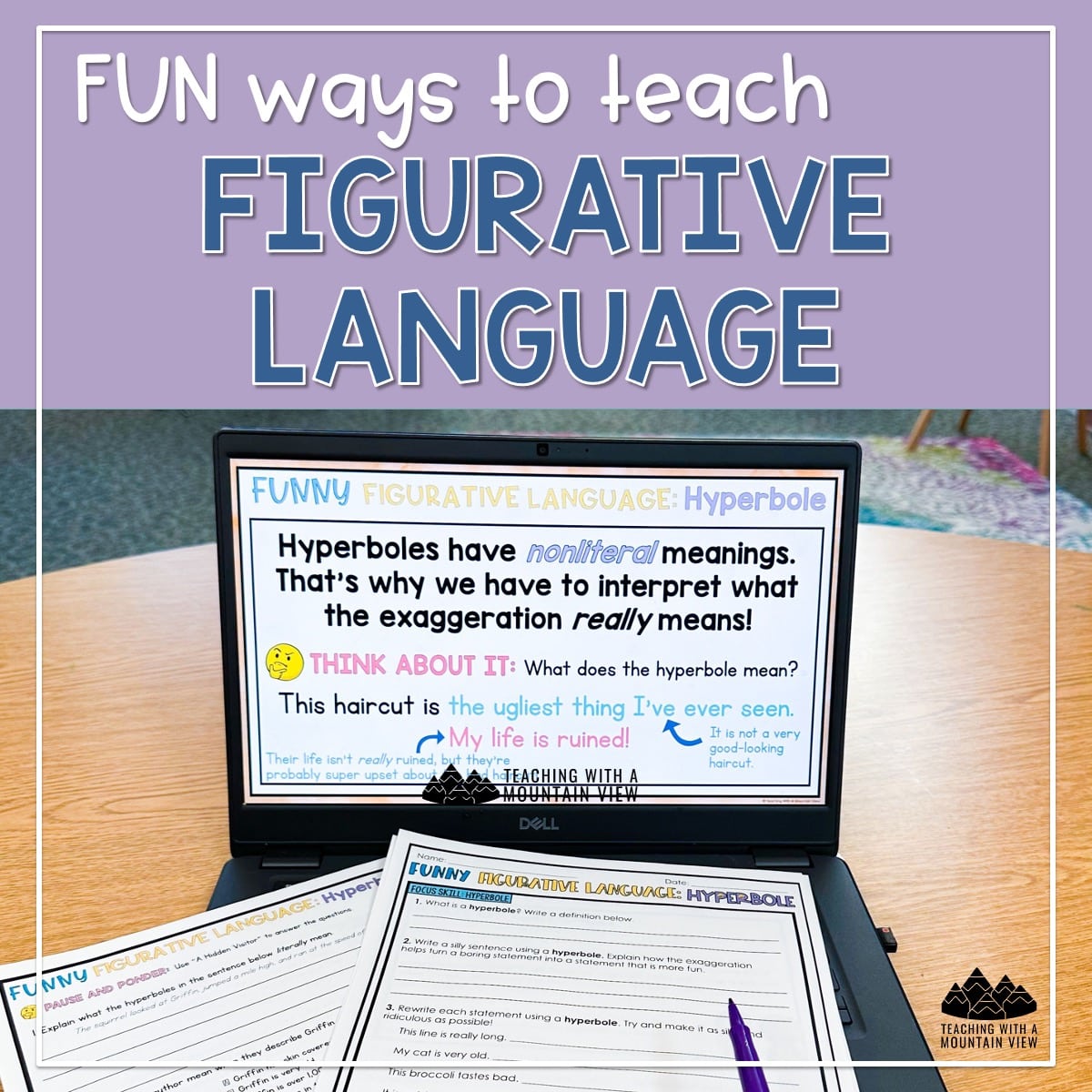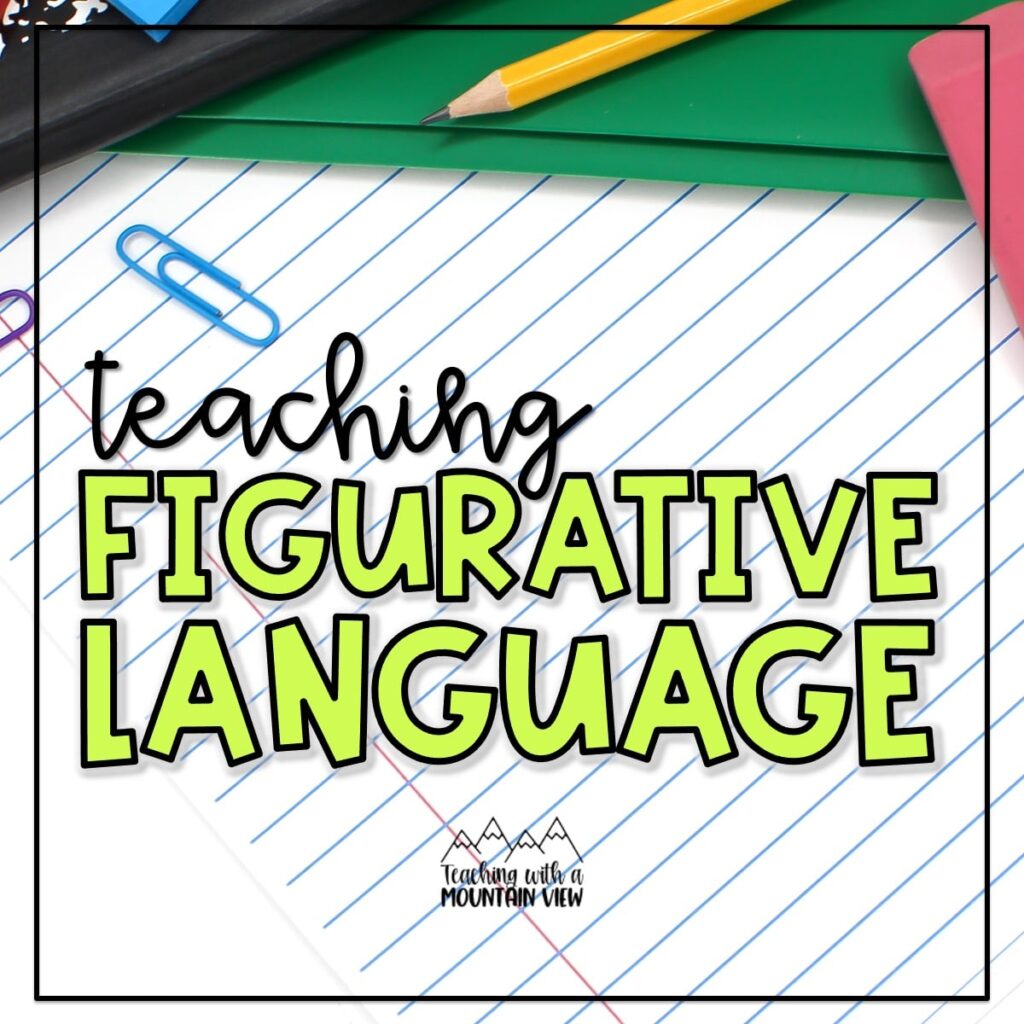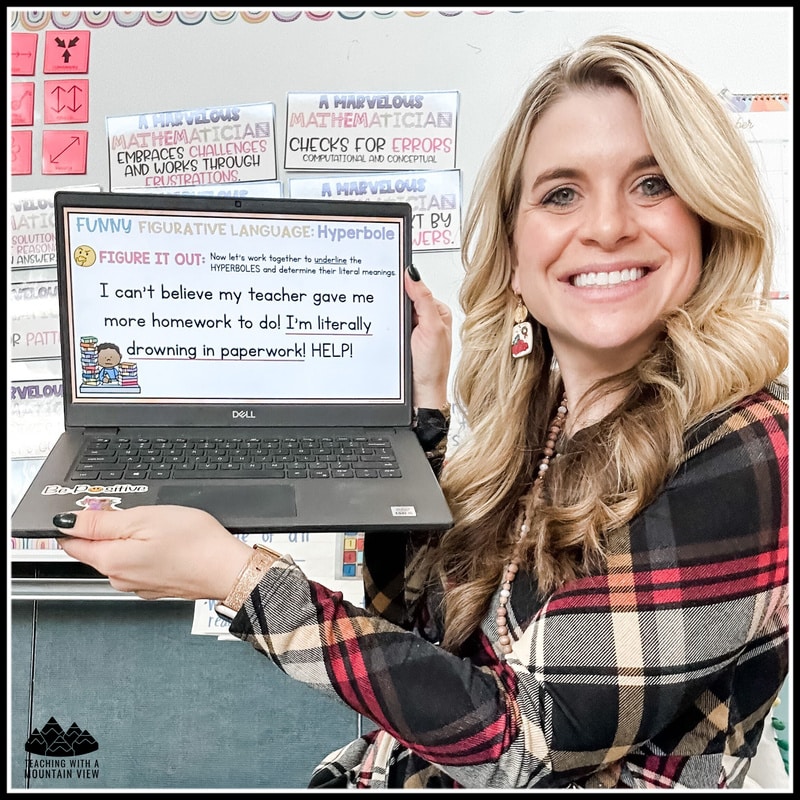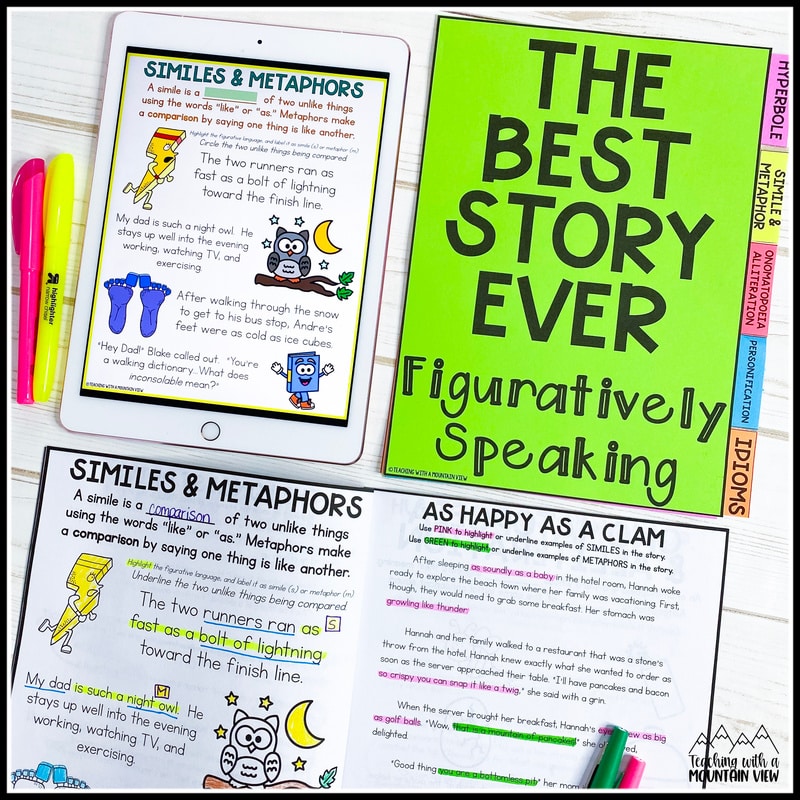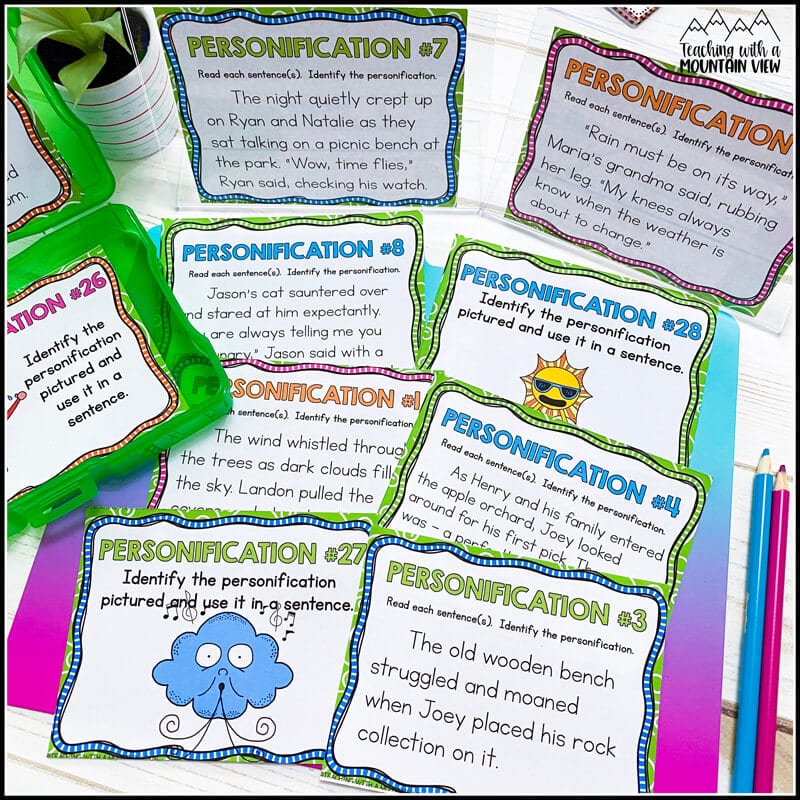Ah, figurative language. Sometimes, teaching figurative language can feel like an uphill battle. If you’ve ever found yourself grappling with how to make teaching figurative language in the upper grades appealing and accessible to your students, you are not alone because I totally understand the struggle. Over the years, I have developed dozens of resources to make teaching figurative language more engaging, rigorous, and of course, low-prep for you!
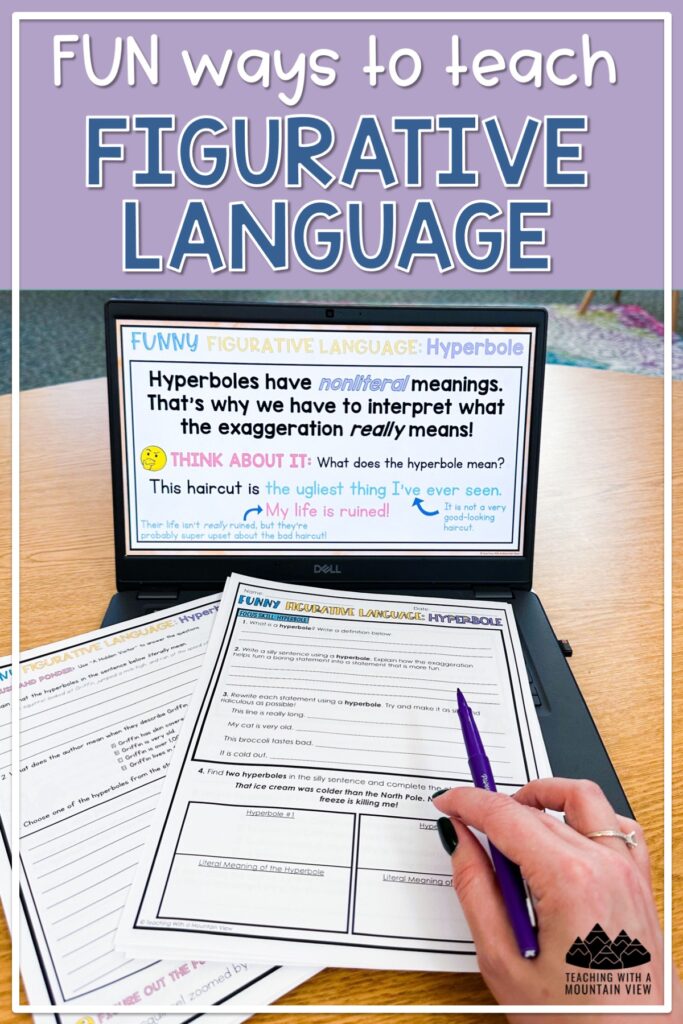
You can visit this figurative language review post to see more ideas for teaching figurative language. It includes my figurative language anchor chart, interactive flipbook, practice activities, and more all in one place. It also includes a FREE bundle of seasonal figurative language task cards with sets for back to school, Halloween, and Christmas.
Teaching Figurative Language with Humor
Even with all those fabulous ideas and resources, I wanted a figurative language curriculum that would help me truly TEACH each type of figurative language. So we set off to create just that! An all-in-one figurative language curriculum that was no-prep for me as a teacher and HILARIOUS for kids! Let me tell you all about it!
Funny Figurative Langauge
Using Funny Figurative Language is the best way to engage students in 10 sets of meaningful figurative language lessons, activities, and assessments that engage and inspire. This upper elementary figurative language program is chock-full of super-silly passages and examples.. your students will be begging for more!
Our Funny Figurative Language program includes everything you need to confidently teach your students ten types of figurative language in a funny and engaging way.
Funny Figurative Language is a bundle that covers ten types of figurative language:
- Alliteration
- Allusion
- Hyperbole
- Idiom
- Metaphor
- Onomatopoeia
- Oxymoron
- Personification
- Pun
- Simile
Let’s take a peek at each piece of the program for teaching figurative language.
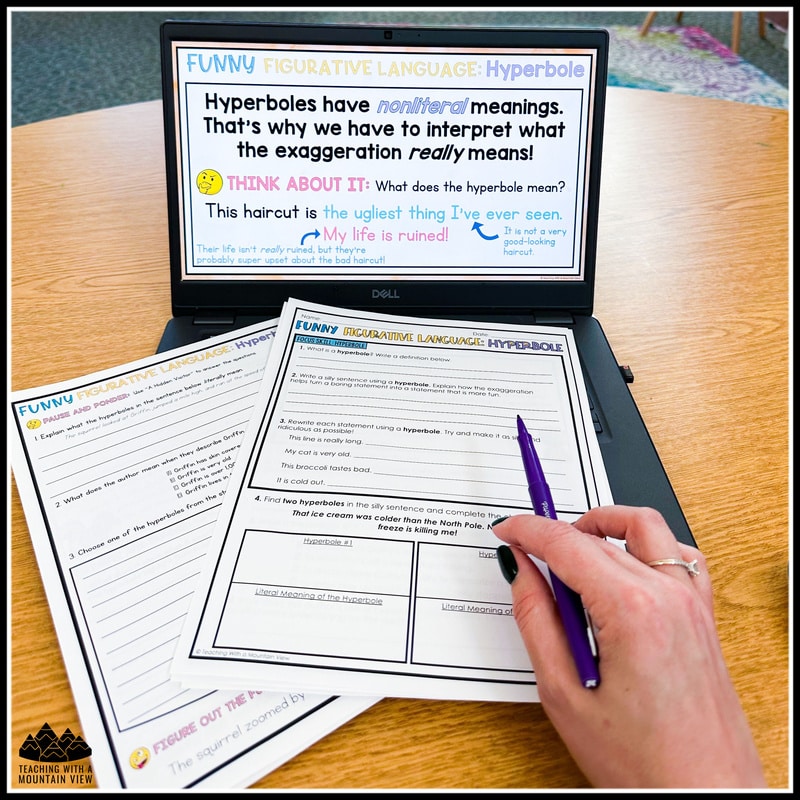
Figurative Language Lesson Slides
These meticulously-designed lesson slides require no preparation on your part. Every lesson begins with defining the type of figurative language and giving examples. Not to worry – these are not your average lessons! This is funny figurative language, after all! Each example will be sure to get your students laughing.
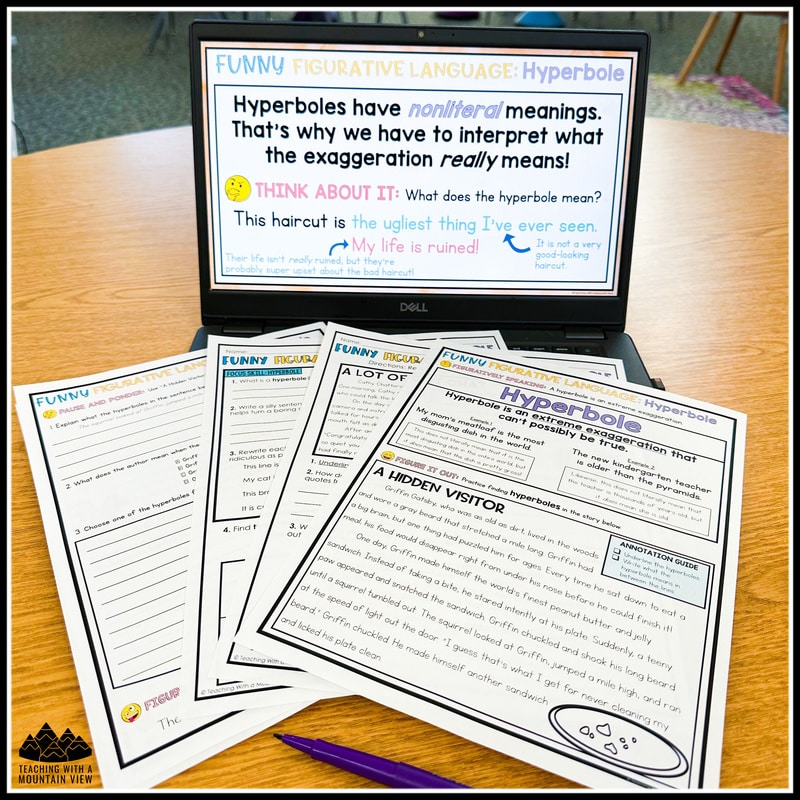
There are many opportunities for student engagement throughout these lesson slides.
- “Think About It” slides allow for class discussion as students read an example of figurative language and determine what makes it unique.
- “Figure It Out” slides encourage students to work together to determine what the figurative language really means!
- “Turn and Talk” slides provide opportunities for students to talk with their peers about what they are learning.
- “Fun Frenzy” slides have endless possibilities! Students might create a funny meme using figurative language, write a song, draw a picture…the list goes on and on!
- To wrap up the lesson slides, students will write in their journals about a given topic using the type of figurative language they learned about. Students will partner up and share their stories. It’s so much fun – and funny, too!
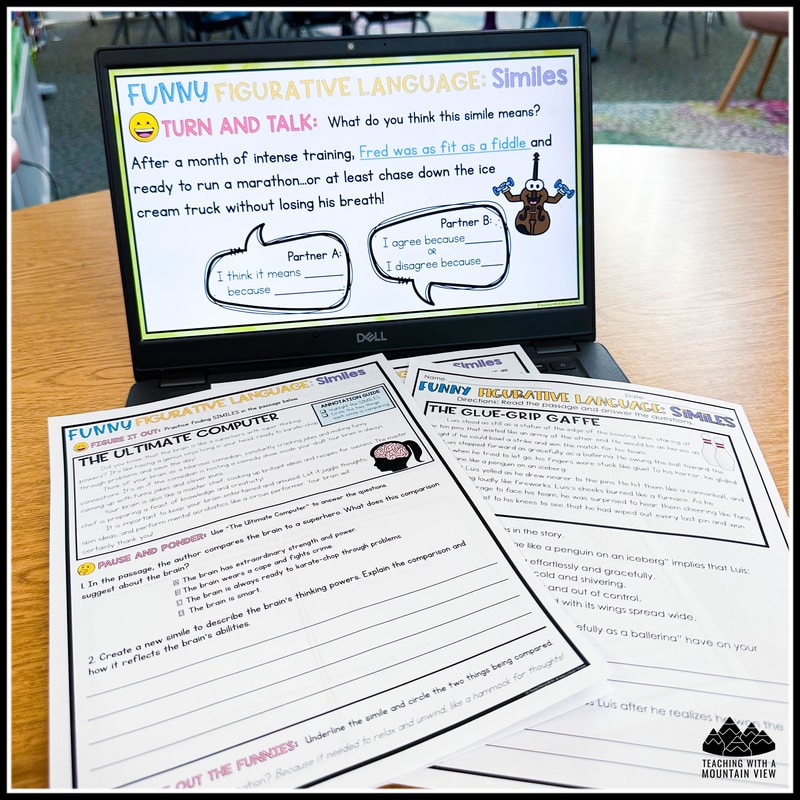
Figurative Language Lesson Printables
After teaching with the lesson slides, it’s time for students to put their knowledge into practice! This fun and engaging three-page activity pack can be used as independent work, intervention, or even homework.
- Page 1 introduces the figurative language with a funny fictional passage and opportunities to annotate the text.
- Page 2 allows students to “pause and ponder” questions about the fictional passage.
- Page 3 includes a funny informational passage with an annotation guide and more higher-order-thinking questions to practice the concept.
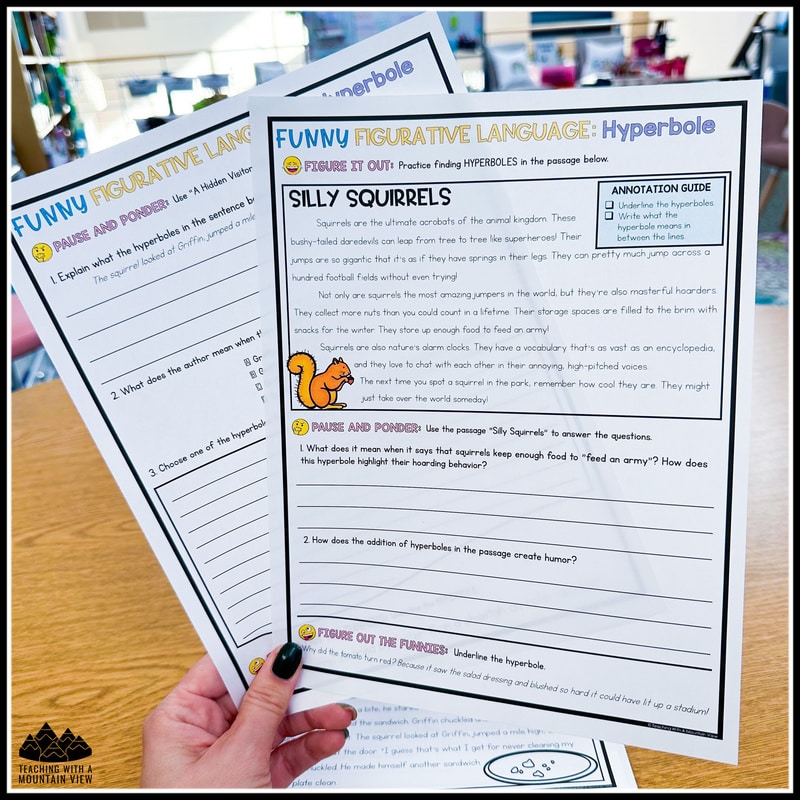
All three pages also include a figurative language joke or pun. Your students will love to “figure out the funnies!”
Figurative Language Lesson Assessment
This two-page assessment can be used as a summative assessment, extra practice, study guide, or even homework!
- The first page includes the focus skill and basic knowledge questions related to the skill. Students will define and apply the skill.
- The second page includes a new, funny passage for students to read. Application questions get students thinking about and reflecting on the passage.
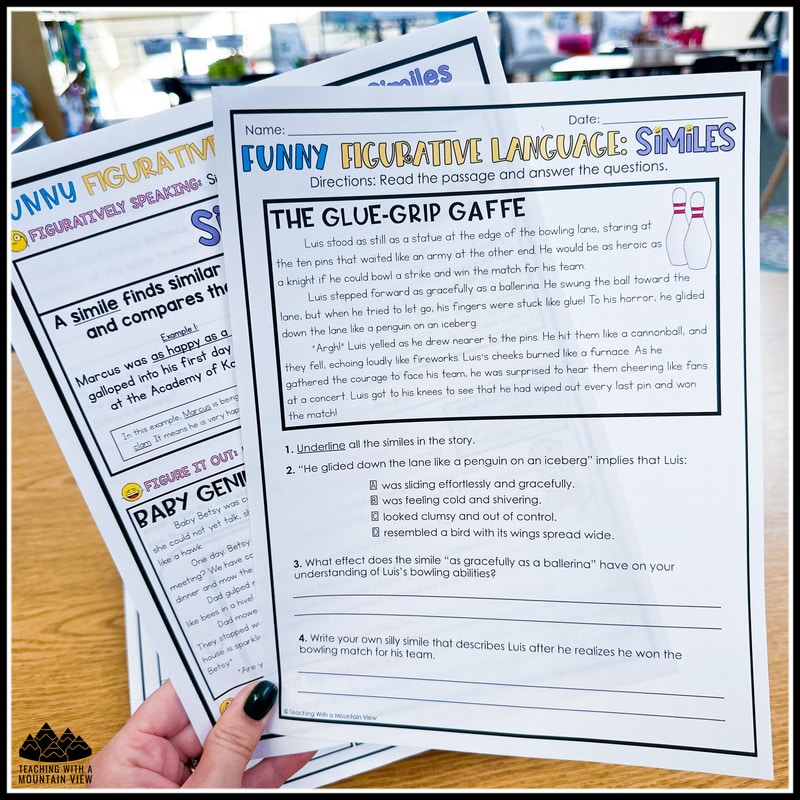
Additional Figurative Language Practice
If you’re looking for additional practice with figurative language, look no further!
This digital or printable flipbook helps students review seven types of figurative language through the use of stories and images. On the left side of each section of the flipbook, students review the definition of the specific type of figurative language and complete a brief activity using pictures and sentences. On the right-hand side of each section, there is a carefully crafted story that uses each of the specific types of figurative language. Within the story, students must identify as many examples of figurative language as possible… HERE IS THE REALLY FUN PART! All five of the stories go together to tell one long tale. Students should complete the entire resource over the course of several days.
These figurative language task cards are great for practicing seven types of figurative language skills in small groups, centers, enrichment, and more! They are the perfect addition to your daily routine and get students thinking about figurative language more frequently.
Figurative language can be tough to teach, but hopefully, these ideas help make your life a little bit easier! Whether you’re teaching about personification, sharing the delightful challenge of oxymorons, or diving into the depths of alliteration, Funny Figurative Language will help make learning a funny and memorable experience for you and your students.
Free Figurative Language Starter Kit
Get ready to master figurative language in upper elementary with this FREE figurative language starter kit. It includes engaging activities to help students become confident in using and identifying figurative language. You’ll also see just how FUNNY figurative language can be with a few funny figurative language slides for onomatopoeia!
Mary Montero
I’m so glad you are here. I’m a current gifted and talented teacher in a small town in Colorado, and I’ve been in education since 2009. My passion (other than my family and cookies) is for making teachers’ lives easier and classrooms more engaging.







